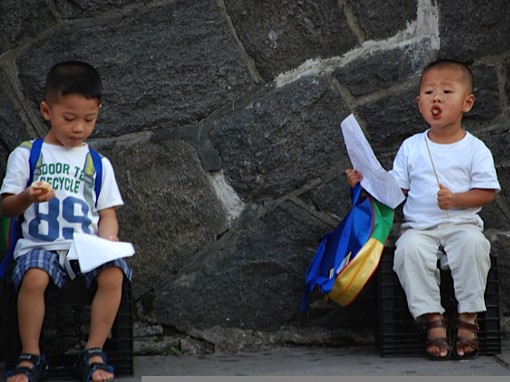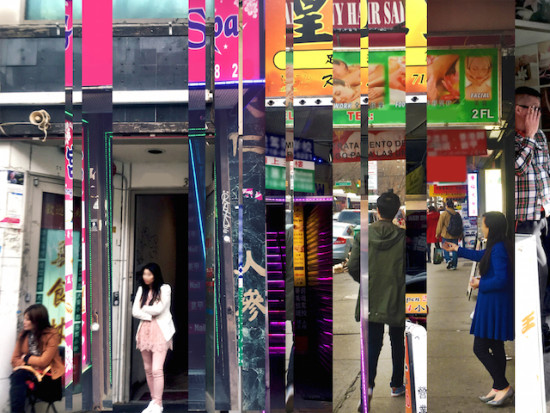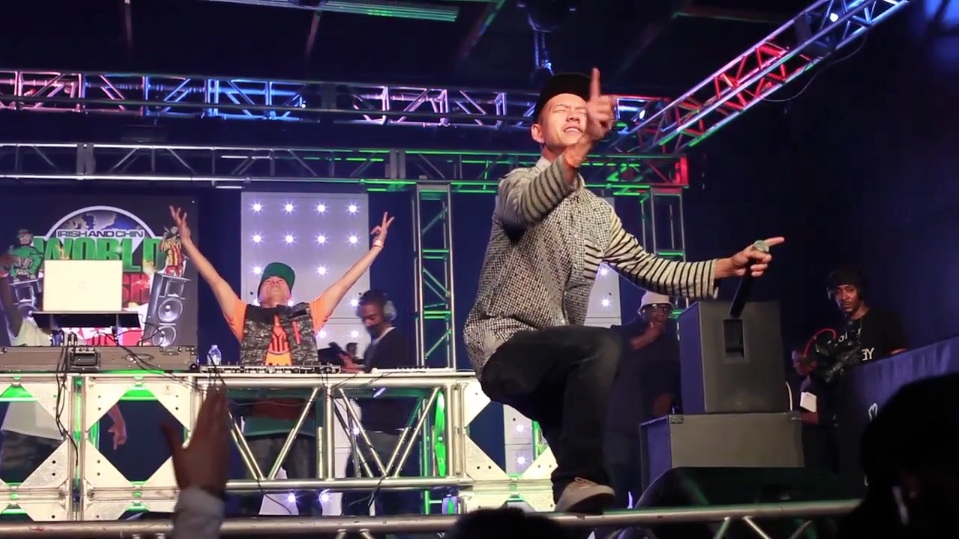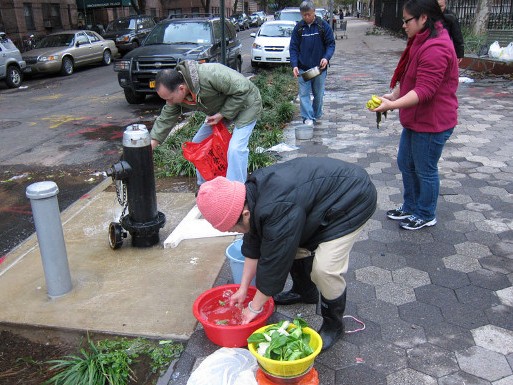Sisters Deanna Fei and Jessica Fei capture the many faces of Flushing: a home, a place of transit, a new territory.

January 9, 2013
Drunken Boat, an international online journal of the arts, is pleased to present Issue #16, an omnibus of folios that includes a special collaboration with the Asian American Writers’ Workshop and Open City. This piece appeared in the folio on Asian American Urbanisms. Click here to read the issue in its entirety.
Last fall, when I first set out to explore Flushing for the Asian American Writers’ Workshop’s new blog, Open City, I realized that the neighborhood most often cropped up in my own vocabulary as the place where I’m from, where I was born and raised, where I often go “back” to see my parents. [see photo 1] In other words, until then, Flushing had principally become the place of my past. Even the landmarks from my childhood that still stand seemed most vivid in my memories: the Chung Hwa bookstore, where I spent many bored hours with my grandmother; the Q26 bus stop, where a driver once referred to a line of us Asians as “another handful of macaroni”; Elite Academy, a cram school where I was sent to gain entry to a Manhattan school—and, by extension, a future—that was more, well, elite. [see photo 2]
[see photo 3] At the same time, from my current perch in gentrifying Brooklyn amid the chattering classes of foodies and bloggers, Flushing has become the buzzword of where-to-eat-now, the place name tossed off in knowing tones, along with references to knife-cut noodles and lamb offal, to mark the speaker as a kind of hip pioneer, the first in his milieu to venture past the Mets stadium and that swampy smell to the last stop on the 7. [see photo 4] It’s a place that’s being discovered, a new territory for those in the know, the destination of the near-future.
[see photo 5] Then, a few months ago, I picked up Ha Jin’s latest story collection, A Good Fall. For his characters, an often-invisible class of recent Chinese immigrants, Flushing is the place where they are constantly arriving, yet never truly arrive. [see photo 6] It’s the entrepreneurial launch pad to the American dream where most “didn’t bother to use English in everyday life… perhaps they were too desperate for survival to worry about that.” It’s a place whose inhabitants “didn’t plan to stay long… as if their current residences were merely a transitory step.” [see photo 7] It’s a neighborhood that leads one character’s visiting mother to marvel, after eating street kebabs and Shanghainese buns and purchasing mung bean noodles for only $1.20, “Now I believe it’s true that all China’s best stuff is in the U.S.” Meanwhile, another character notes, “I feel I’m still in the yuan system, even though I’ve lived and worked in the United States for more than two decades.” For this community, Flushing represents a bewildering suspension in space and time; a place where people might settle in, but not settle down; a never-quite-home. [see photo 8]
What’s undeniable about Flushing, whoever you are and whenever you go, is how it catches you up in its currents. [see photo 9] It is, most centrally, a place of transit, of exchange, of rushed comings and goings, of resigned waiting, of rare and fleeting moments of rest. For all that immigrant enclaves inspire contemplation of traditional versus modern, familiar versus foreign, past versus future, once you step onto the streets of Flushing, you know just where you stand: right here, right now. [see photo 10]



